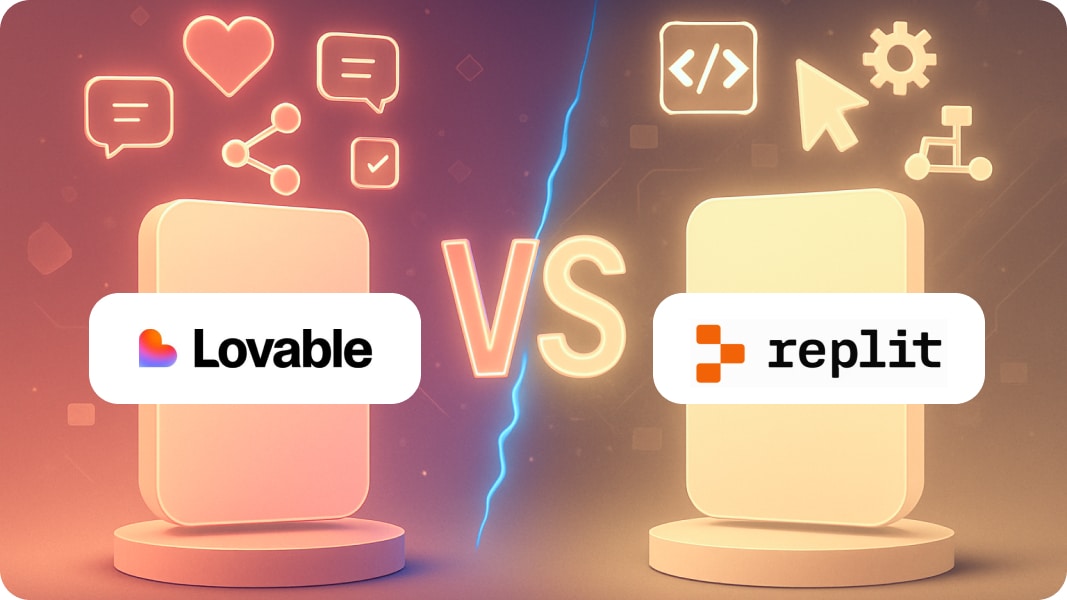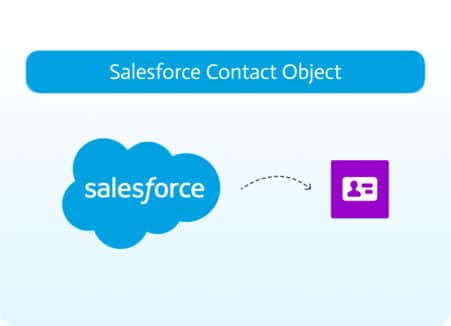

Lovable vs. Replit: The Vibe Coding Battle
Two platforms walk into a bar, one says, “I’ll make your app while you drink your coffee.” One says, “From your browser, I’ll teach you how to fish, code, and deploy.” In short, this is the Lovable vs. Replit match-up that’s stacking up to be one of the more exciting splits in the vibe coding world.
Lovable is on track to reach 8 million users by marketing itself as the savior of non-coders and the most simple form of idea-to-app alchemy. Replit has more than 30 million users around the world and just raised money at a $3 billion valuation. It has built a whole coding universe in the cloud where Agent 3 can now work on hard tasks for up to 12 hours without help.
It’s not really about which one does vibe coding better when you ask “Lovable vs. Replit.” It’s about the kind of vibe you want in your coding relationship. Do you want a personal chef who cooks everything for you, or do you want a kitchen with smart appliances that help you cook?
The Hands-Off Revolution: Lovable
From a business model point of view, Lovable is interesting because it bets that most people don’t really want to learn to code; they just want software that works. By focusing on that insight, the platform made $17 million a year in recurring revenue from 30,000 paying customers.
The pitch is very simple
Tell us about your app idea, watch it come to life, deploy it, and own the code. Lovable turns conversational commands into full web apps with both front-end and back-end functionality. Users don’t have to touch any code unless they want to. This last part will be essential because you can send everything to GitHub and let developers improve it.
What Makes Lovable Different
The recent release of Lovable Cloud and Lovable AI (which uses Google’s Gemini algorithms) changes the vibe coding value offer even more. With Lovable AI, users can add AI features to their apps without having to set anything up, get API keys, or pay for them separately. Do you want a chatbot in your customer portal? Simply ask. Do you need to analyze the emotions in user feedback? Tell me about it.
This isn’t about figuring out how to develop apps or understand how constructions work. It’s about assisting entrepreneurs in making tools for business without having to translate them into technical language. A manager at Plaid used Lovable to turn a manual SLA tracking process into an interface that makes changes in real time. That’s not just a developer project; that’s someone who is directly solving their own problem.
The infrastructure works with Supabase for relational databases and GitHub for revision control right out of the gate. This makes it possible for your apps to connect to real processes. You’re not stuck in a toy world; you’re making things that can actually run your business.
Lovable’s Honest Limitations
Look, they’re honest about the fact that complex, enterprise-grade apps may still need a developer’s help to make them better. You can make intricate apps, but making decisions about how to make them more scalable, secure, and fast often requires more than just talking to someone.
There is also a learning curve for prompt engineering. To get the best results from complex applications, you need to learn how to ask for things, which is ironic because the platform promises to get rid of technical hurdles. Some people do well with this, while others find it annoying.
Replit: The Gym for Developers
Replit made something completely different: a full cloud-based development environment where you code in your browser with AI as your programming partner. The platform is for everyone, from middle schoolers learning Python to big companies like Zillow, where non-technical workers are now helping to build software.
The secret ingredient is the Replit Agent, which has changed a lot over three generations. Agent 3 can now work on its own for up to 12 hours, keeping things consistent even through those marathons that earlier versions couldn’t handle. This isn’t just autocomplete; it’s an AI that tests its own code, finds mistakes, fixes them, and does it all over again until everything passes.
What Makes Replit Different
It’s based on Replit’s WebContainers technology, which provides a full development environment for more than 50 programming languages. But here’s the catch: Replit Agent tests and fixes its code, making your app more functional all the time in a reflection loop.
Agent 3 added computer use testing, which means that the agent opens a browser and tests its own work, exactly how a user would. Replit’s own testing system is three times faster and ten times cheaper than other computer use models. When you need to make changes quickly, this type of efficiency is incredibly significant.
Agent 3 can build other agents and make workflows, and that’s probably the most interesting thing. You tell Agent 3 what kind of workflow you want in plain language, and it makes a special agent to take care of it. These agents can work with Slack, email, and Telegram, which turns vibe coding into automation engineering.
This is backed up by real-world evidence. Replit helped AllFly’s COO rebuild their whole app in just a few days. This cut development costs by more than $400,000 and pumped output by 85%. The Zinus team used Replit to build an automated system that made a long, expensive process faster and easier.
Where Replit Gets Messy
The platform assumes you know the basics of coding, regardless of it helping you code faster. If you know what it’s doing, watching Agent 3 work is interesting. The IDE heritage shows itself in file inspection, Git diffs, GitHub pushes, and compatibility with VS. But if you don’t know how those workflows work, you’re out of luck.
Some developers say that the software isn’t reliable because it has bugs and limits on how it can be used that are annoying. People have complained that the support team isn’t as responsive as they’d like, and the pricing model seems limiting to those who hit their token limits faster than they thought they would. The token-based billing makes sense, but it makes me worry that costs will go up when having to endure long debugging sessions.
Some early users say the AI’s amazing, but it does have some real limits. The vibe coding experience still needs developers to know what they’re making, but they can do it far faster than before. It works at “person speed, not instantaneous computer speed,” so it can feel a little slow when you watch the agent write code for a long time.
The Lovable vs. Replit Decision Framework
Pick Lovable when:
- You need to fix business problems, but don’t want to become a developer
- Speed from idea to deployed solution is more important than architectural control.
- Your apps are easy to use, like dashboards, forms, and CRUD apps.
- “Vibe coding” doesn’t mean “help me build this”; it means “build this for me.”
- You’d rather talk about requirements than write any code.
- Because of your budget limits, hiring developers isn’t out of the question.
Pick Replit when:
- You want to learn real creation, where AI greatly speeds up the process.
- You need to know why architectural control is important.
- Your vibe coding workflow should not only make suggestions but teach patterns too.
- You’re making apps that require custom or advanced functionality.
- You want a platform that gets better as your technical know-how does.
- You’re wanting a place where prototypes can turn into real systems.
The Lovable vs. Replit Hybrid Path Ahead
When savvy companies compare Lovable vs. Replit, they don’t see them as competitors, instead, they use both platforms in a strategic way.
Product managers make prototypes in Lovable, which makes it easy to get quick feedback on ideas from stakeholders. The vibe coding method quickly gets working apps in front of decision-makers, who can then provide the necessary feedback on a big investment.
Once ideas and needs become clear, development teams move to Replit, where they can improve architecture, speed up performance, and build as soon as they’re actually ready for production. Or they export from Lovable and keep working in Replit’s environment, using AI while remaining in charge.
This layered vibe coding strategy makes the most of each platform’s strengths without making you choose between which of the two options would suit you best.
How Noca Fairs
Noca doesn’t just build static apps, it makes AI agents and gives them the ability to make informed decisions and choices, keep an eye on things, start workflows, and learn patterns that allow them to make optimized suggestions for you apps and integrations.
Integrations that are built in so that Noca connects to your apps, files, and web services right away, so you can build new workflows on top of the ones you already have. This is different from something that makes you start over or find ways to get around rules.
In simple terms, go over every part of the portal, including how it works with other systems. Look at and improve apps that were made with conversational prompts. Start production with built-in security and control.
The Bottom Line on Lovable vs. Replit
The comparison between Lovable vs. Replit shows that these two platforms are solving very different problems in the vibe coding revolution.
Lovable makes it possible for people who don’t know how to code or don’t want to learn how to code to make apps. It reached $17 million in annual recurring revenue (ARR) by focusing on the fact that most business problems don’t need you to be a developer; they just need working software. Sabrine, for example, made $456,000 in annual revenue in three months with a women’s safety app that was made entirely with Lovable.
Replit turns the whole development environment into a cloud-based, AI-powered experience. Replit used Anthropic’s Claude 3.5 Sonnet on Google Cloud’s Vertex AI to make Agent work. This lets anyone from anywhere turn ideas into apps using natural language prompts, while still being able to see how the code works and learn more about engineering.
There is no one platform that is better than the other. They are made for very different types of users, situations, and ideas about what vibe coding should do. The platform you choose has less to do with which one has better features and more to do with how you feel about code.
Want to build things without knowing how to code? Adorable. Want to learn to code while AI helps you grow faster? Replit.
Want prototypes that stakeholders can touch right away? Adorable. Want places where you can make and understand every decision? Replit.
It’s not about one platform winning in the vibe coding revolution. It’s about having the right tool for every situation, every skill level, and every step of the way.
Lovable vs. Replit FAQs
Can complete beginners use either Lovable or Replit easily?
Lovable is a yes, but Replit is a maybe. Lovable is made for people who have never coded before and makes apps that work from simple English descriptions. Replit runs in a web browser and doesn’t require any installation, so it’s easy for beginners to use. However, you’ll learn coding concepts along the way instead of avoiding them.
Which platform lets me get to a working app the fastest?
Lovable is great for quick results; just describe your idea and get an app up and running in minutes. Use Replit for speed if you know what you’re doing, since Agent 3 can work on its own for hours, but you’ll need to guide and improve its choices.
How do these platforms deal with hosting and deployment?
As part of the experience, Lovable includes deployment through Lovable Cloud. Replit has flexible hosting options, one-click deployment, free use with quick deployment times, and reserved VM deployments with 99.9% uptime for important apps. All of this is built on AWS Lightsail behind the scenes.
Is it possible to export my code and leave either platform?
Of course. You can export code from both platforms and keep working on it somewhere else. Lovable works with GitHub for version control, and you can download Replit projects and use them with other tools, such as GitHub.
What is the real difference in price between Lovable and Replit?
Both use pricing models based on how much you use them. Replit uses effort-based pricing, which means that the price depends on how hard and long the tasks are that Agent does. Lovable has different prices for different types of users. Both have free tiers to start with, but if you want to use either platform a lot, you’ll need to pay for a plan.
Will these platforms really help me learn how to code?
Yes, Replit, but not really Lovable. Replit shows you real code, development patterns, and architectural decisions, so you learn by doing with help from AI. Lovable takes care of all the coding for you, which is the point: you’re building without learning to code, which may or may not be what you want to do.


